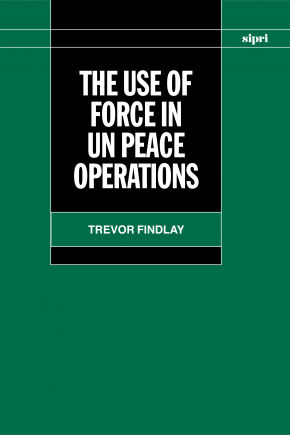The Use of Force in UN Peace Operations
One of the most vexing issues to have faced the international community since the end of the cold war is the use of force by United Nations peacekeeping forces. UN intervention in civil wars—as in Somalia, Bosnia and Herzegovina, and Rwanda—has thrown into stark relief the difficulty of peacekeepers operating in situations where consent to their presence and activities is fragile and where there is little peace to keep. Complex questions arise in these circumstances. When and how should peacekeepers use force to protect themselves, to protect their mission and, most troublingly, to ensure recalcitrant parties' compliance with peace accords? Is a peace enforcement role for peacekeepers possible or is this simply war by another name? How is it to be distinguished, doctrinally, from traditional and expanded peacekeeping? Trevor Findlay records for the first time the history of the use of force by UN peacekeepers, from Sinai in the 1950s to East Timor in 2001. He traces the origins of peacekeeping norms, notably the constraints on the use of force except in self-defence, and how these have evolved both in practice and as reflected in mission mandates, use of force guidelines and rules of engagement. Drawing on these insights, Dr Findlay examines how the use of force by UN peace operations might in future be managed and executed, including by the development of a credible UN peace operations doctrine.
2. The emergence of the self-defence norm: UNEF I
3. Breaking the rules: Peace enforcement in the Congo
4. The Congo to Lebanon: From self-defence to 'defence of the mission'
5. After the cold war: Use-of-force dilemmas resurface
6. Somalia: Crossing the Mogadishu Line
7. Bosnia: From white-painted tanks to air strikes
8. From Haiti to Rwanda to Sierra Leone: New missions, old dilemmas
9. Retreat, resurgence and reform: Rethinking the use of force by the United Nations
Appendix 1. National peace operations doctrines
Appendix 2. Rules of engagement
Appendix 3. The UN master list of numbered rules of engagement

